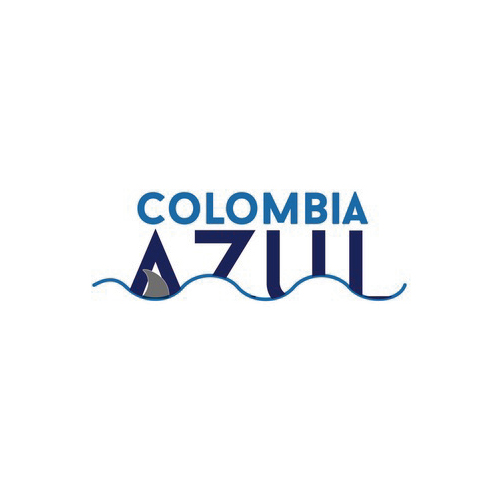說明
In response to population declines noted for many sharks and other elasmobranch species around the world, protecting them from overexploitation has become a global priority. However, the necessary data to assess the diversity and abundance of elasmobranchs has often hindered efforts to effectively restore and protect such species. Many reef surveys around the world have been conducted by scuba divers, although many studies have exposed the flaws and biases of this type of surveys for species such as elasmobranchs. Sampling of these species has traditionally been resource and time intensive due to the need to capture sharks or rays on lines. Recently, advances in video technology have allowed the deployment BRUVs. This technique involves positioning a bait source in front of an underwater video camera and quantifying the fish that are observed in the field of view over a standard sampling period and are an ideal way to quickly, and inexpensively, sample populations of relatively low-density predators like sharks and rays. Due to the remote location of Isla Cayo Serranilla, in the northernmost region of the Seaflower Biosphere Reserve, there is a lack of knowledge of elasmobranch species and their abundance in the area. In order to estimate reef elasmobranch diversity and relative abundance in the Colombian Caribbean at Isla Cayo Serranilla and detect possible bright spots in the region, 52 BRUVs were deployed on the fore-reef and the inner lagoon. Depth was standardized between 8 and 30 m and deployments were performed using standardized pre-weighted bait. Videos will be watched, and species and the maximum number of reef species observed in a single frame (Nmax) will be recorded. This estimate (Nmax) is similar to the Catch per Unit of Effort (CPUE) and will be used to assess the relative abundance of reef shark at Isla Cayo Serranilla.
Conduct a 2-week Baited Remote Underwater Video Survey (BRUV) of reef elasmobranch diversity and relative abundance in the Colombian Caribbean at Isla Cayo Serranilla (San Andrés Archipelago) and detect possible bright spots in the region. These key baseline data will support future studies on elasmobranchs in other areas of the Seaflower Biosphere Reserve and fill in gaps on the status of elasmobranch populations in the region. This will be combined with large existing BRUV datasets collected in other key locations around the world for a global analysis through the Global FinPrint project (www.globalfinprint.org).
資料紀錄
此資源出現紀錄的資料已發佈為達爾文核心集檔案(DwC-A),其以一或多組資料表構成分享生物多樣性資料的標準格式。 核心資料表包含 95 筆紀錄。
此 IPT 存放資料以提供資料儲存庫服務。資料與資源的詮釋資料可由「下載」單元下載。「版本」表格列出此資源的其它公開版本,以便利追蹤其隨時間的變更。
下載
下載最新版本的 Darwin Core Archive (DwC-A) 資源,或資源詮釋資料的 EML 或 RTF 文字檔。
版本
以下的表格只顯示可公開存取資源的已發布版本。
如何引用
研究者應依照以下指示引用此資源。:
Fundación Colombia Azul, Universidad de los Andes & Florida International University (2017). Elasmobranquios de la Isla Cayo Serranilla durante la Expedición Seaflower 2017 - Proyecto Colombia BIO. Versión 1.0. 95 registros, aportados por: Cardeósa C, Monsalve S y Cáceres C. Conjunto de datos/Registros biológicos.
權利
研究者應尊重以下權利聲明。:
此資料的發布者及權利單位為 Fundación Colombia Azul。 This work is licensed under a Creative Commons Attribution Non Commercial (CC-BY-NC) 4.0 License.
GBIF 註冊
此資源已向GBIF註冊,並指定以下之GBIF UUID: 56c48715-9f8b-445a-98b7-cada12902027。 Fundación Colombia Azul 發佈此資源,並經由Colombian Biodiversity Information System同意向GBIF註冊成為資料發佈者。
關鍵字
Occurrence; Observation; COLOMBIA BIO; SEAFLOWER
聯絡資訊
資源建立者:
可回覆此資源相關問題者:
元數據填寫者:
與此資源的相關者:
地理涵蓋範圍
Isla Cayo Serranilla, Reserva de la Biósfera Seaflower, Colombia.
| 界定座標範圍 | 緯度南界 經度西界 [15.733, -79.933], 緯度北界 經度東界 [15.91, -79.746] |
|---|
計畫資料
無相關描述
| 計畫名稱 | Caracterización de biodiversidad para el fortalecimiento de colecciones científicas y la generación de información genética de la biodiversidad colombiana, en el marco del programa Colombia BIO |
|---|---|
| 辨識碼 | Colombia_BIO |
| 經費來源 | Colombia BIO. Convenio especial de cooperación No. 341 del 2017. Aunar esfuerzos para caracterizar la biodiversidad en áreas de interés científico y con baja información biológica, para el fortalecimiento de las colecciones científicas y la generación de información genética de la biodiversidad Colombiana, en el marco del programa Colombia BIO. |
參與計畫的人員:
取樣方法
Elasmobranch diversity and abundance was surveyed on the fore-reef and the inner lagoon selecting sites randomly within the defied boundary of the study reef.
| 研究範圍 | Isla Cayo Serranilla, Reserva de la Biósfera Seaflower, Colombia. |
|---|
方法步驟描述:
- Fiftytwo BRUVs were deployed consisting of a video camera (GoPro) mounted on a metal frame with a cage with pre-weighted bait source (e.g. 1 kg of sardines) attached to a metal pole in the camera’s field of view. Each BRUV was deployed using a 50 m rope from the boat and in-water personnel to orient the BRUV facing down current between 5 to 30 m of depth. Cameras recorded for standardized 90 minutes after settling to the bottom. No BRUVs were simultaneously deployed within 1000m of one another. Units were manually retrieved using the rope, which terminates in a small buoy to aid in relocation. At both the start and end of each deployment environmental variables such as underwater visibility, temperature, salinity, dissolved oxygen, wind speed and wind direction, bottom depth, cloud cover and surface wave chop), were recorded.
額外的詮釋資料
| 目的 | Objective 1: Complete a survey of reef elasmobranch (sharks and batoids) relative abundance and diversity in coral reef ecosystems along Isla Cayo Serranilla (San Andrés Archipelago) using BRUVs. • Objective 2: Include Colombia’s Caribbean reefs into Global Fin-Print project, whose overarching goal is to consolidate existing and newly collected BRUV data into a single analysis, producing the first globally standard survey of elasmobranch density and diversity over the world’s continental and insular shelves, focusing on coral reef ecosystems. • Objective 3: Frame the results in such a way to identify contemporary hotspots of reef elasmobranch abundance and diversity and highlight the differences between pristine and impacted sites for all habitat types. |
|---|---|
| 替代的識別碼 | doi:10.15472/ohqepf |
| 56c48715-9f8b-445a-98b7-cada12902027 | |
| https://ipt.biodiversidad.co/sibm/resource?r=fca_elasmo_seaflower_2017 |
